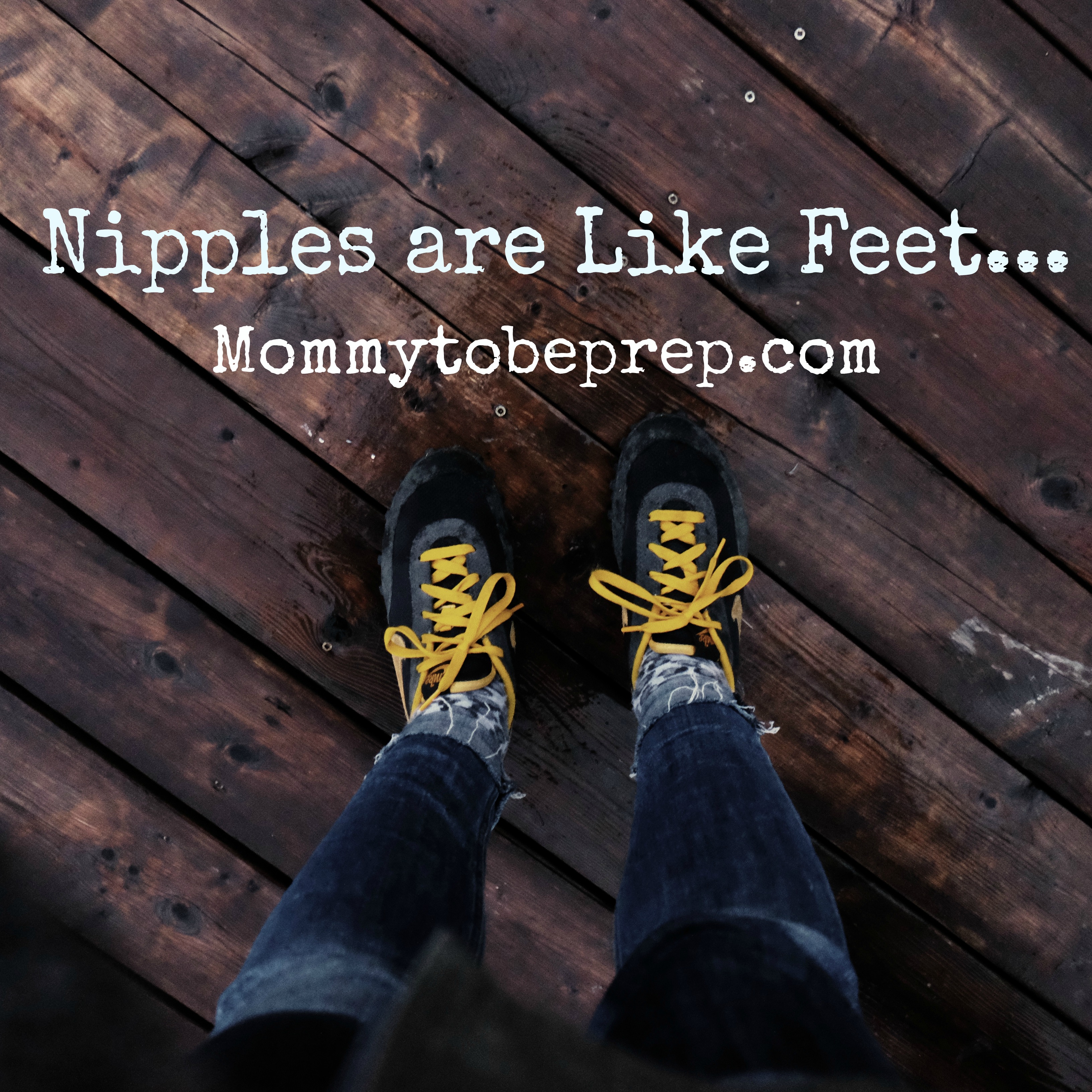Sore & Cracked Nipples

Nipples are like feet. Besides the fact that they like to be covered in the day and free in the bed, they come in many shapes and forms; large, small, flat, pointy, and even inverted. They both serve fundamental purposes– walking and feeding. Feet can get sore, cracked, and blistered from an improper fitting shoe and excessive walking. Nipples can get sore, cracked, and blistered from an improper latch and excessive suckling. Just like a good pair of shoes need to be broken in with some time and some practice, you and your baby will also benefit from some time and practice.
It is normal for women to have a small amount of soreness and discomfort when first starting to breastfeed. This pain should be eased within the first week. Any nipple soreness that continues after the first week is abnormal. If you are having nipple pain, continue to breastfeed. But do not soldier through the pain ignoring it, TREAT IT! The best thing to do is to fix the underlying problem.
The Underlying Problems of Cracked & Sore Nipples
Baby’s Latch
The most common cause of nipple pain is due to a shallow latch. If you put your index finger in your mouth (do this exercise after eating Doritos and it will be much more enjoyable) just far back enough so your lips cover your first knuckle and then suck on that finger. You will feel how your tongue rubs the top of your finger. Now go ahead and stick your finger a little further in your mouth (between the first knuckle and second joint- hopefully you were real messy with those Doritos). As you suck on your finger deeper in your mouth, you should no longer feel your tongue rub on the tip of your finger. When your baby has a deeper latch, your nipple will not be pinched or rubbed. Thus the depth of the latch can make the difference between sore nipples and comfortable breastfeeding. (La Leche League International, 2003, p.76)
To learn how to get the perfect latch, head over to my post The Post 5 Ps of Successful Breastfeeding under “Position Your Baby”. And remember, just as you may go to a specialized running store to get fitted for the proper shoe, lactation consultants are there for you to help you get that proper latch.
Pulling Baby Off
If you need to pull your baby off your nipple before he or she becomes unlatched for any reason, such as your baby biting you, first break the suction! You can do this by placing your finger in the corner of the baby’s mouth and then gently pulling down on the baby’s chin pulling your baby off the breast. Never pull your baby off your breast without first breaking your baby’s seal.
Infection
If you have thoroughly assessed your baby’s latch and cannot find any issues, see your Doctor. Breast infections such as mastitis and thrush can cause awful nipple pain.
How To Deal With Sore, Cracked Nipples
- Bath with plain water and pat dry unless directed by your Doctor.
- After breastfeeding, leave a little breast milk on your nipple and let air dry. The fresh expressed breastmilk will help to reduce the chances of infection due to the antibacterial properties of the breast milk. If you have thrush (a yeast infection) do not do this and keep your breasts as dry as possible.
- Get a nipple cream. Lanolin is a great basic cream to start with and is hypoallergenic. You usually will be able to get a free sample of lanolin at your Dr.’s office or at your hospital (I carry a sample in my pocket to put on my chapped lips!) Some of my patients have also used coconut oil and say that has worked well for them. Triple Nipple cream or APNO (All Purpose Nipple Ointment), is three creams mixed in one with different purposes, an anti-fungal, a steroid to decrease inflammation, and an antibiotic. You will need a prescription for this and it is best to get at a compound pharmacy.
- Feed your baby often to prevent your baby from using a vigorous suck. Breastfeed from the breast that is the least sore first if possible.
- Use Hydrogel pads and glycerin gel pads such as Lansinoh Soothies for calming nipple pain. My patients LOVE these, especially after being in the fridge!
- DO NOT use moist tea bags, hair dryers, or sun lamps on your nipples. These are all tips that may come from your great aunt Ruth that have been proven to make your little lady friends worse.
*If your nipples are bleeding, any blood that your baby swallows from the damaged nipple will not be harmful.
Remember, sore nipples DO heal! You and your baby will be able to go on both benefiting from all the advantages that breastfeeding has to offer! Seek help and stay with it!
Resources:
How do I heal sore nipples? Obtained from http://www.lalecheleague.org/faq/heal.html
Mohrbacher, N., & Stock, J. (2003). The breastfeeding answer book. Schaumburg, IL: La Leche League International.